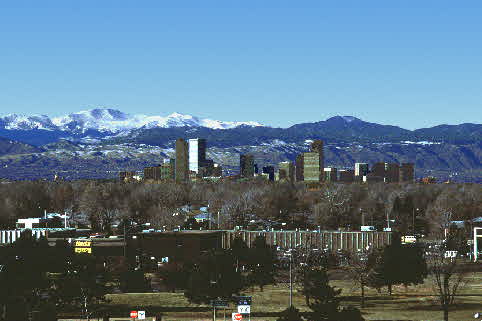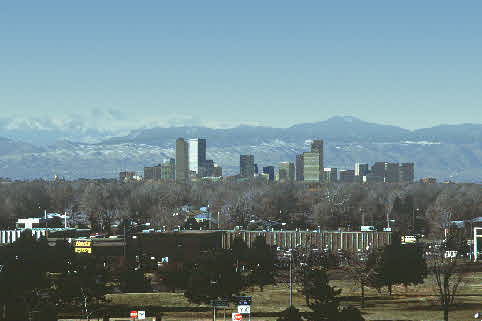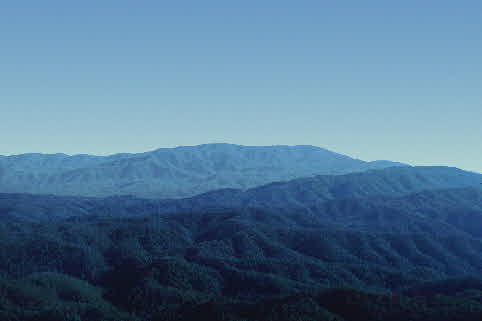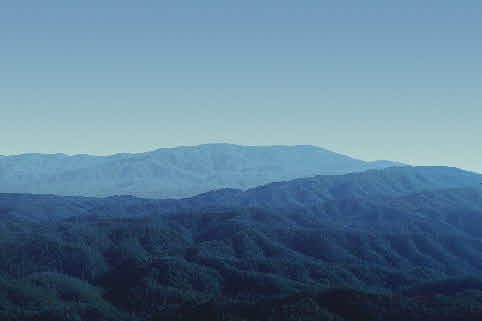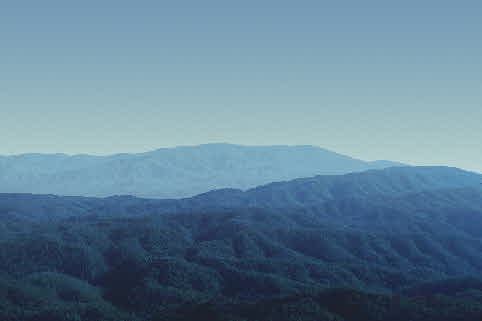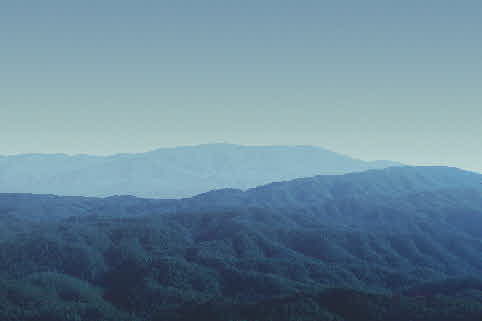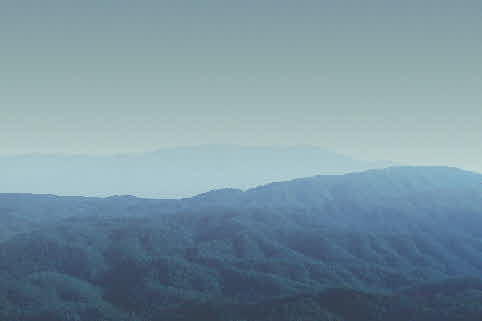Visibility Focus Group
Visibility Valuation Survey Pre-Testing and Pilot Study
Visibility_Focus_Group
Visibility Focus Group
OMB: 1024-0255
Focus Group Telephone Screener
Hello, my name is [INTERVIEWER NAME] from [FOCUS GROUP FIRM], a local research company. We are not selling anything. We are recruiting people to participate in a group discussion about a current public policy issue, and we would like to ask you four quick questions to see if you qualify. Each participant in the group discussion will receive $75 for their time.
Also, so you are aware, this group will be related to a survey being conducted by the federal government. The Paperwork Reduction Act requires approval of all federal government surveys by the Office of Management and Budget. This survey has been approved under this Act. The Office of Management and Budget control number and expiration date is available at your request.
All of your answers are voluntary.
[NOTE TO INTERVIEWER: IT IS IMPORTANT THAT NO INFORMATION ABOUT THE PURPOSE OF THE STUDY BE PROVIDED TO RESPONDENTS. IF A RESPONDENT INQUIRES ABOUT THE FOCUS GROUP TOPIC, THE INTERVIEWER SHOULD SIMPLY REPEAT THAT IT IS ABOUT A CURRENT PUBLIC POLICY ISSUE.]
1. Have you participated in a focus group discussion within the last two years?
 ___
Yes TERMINATE
___
Yes TERMINATE
___ No
2. Could you please tell me which of the following categories best describes your age?
 ___
Under 20 TERMINATE
___
Under 20 TERMINATE
___ 20 - 34
___ 35 - 49
___50 or older
3. Which of the following categories best describes the highest level of education you have achieved?
___ High school or less
___ Some college or associate degree
___ Bachelors degree or higher
4. Which of the following categories best describes your total household income in 2006?
___ $0 to $30,000
___ $30,000 to $65,000
___ $65,000 or greater
5. [NOTE GENDER]
___ Male
___ Female
6. On [INSERT DATE], we are holding focus group discussions to gather opinions about a public
policy issue. The discussions will last for two hours, starting at 5:30 pm and 8:00 pm, and each participant
will receive $75 as a thank you gesture. We will also serve light refreshments. These groups will take
place at [LOCATION]. Would you be interested in attending? Most people really enjoy these discussions.
____ Yes
_ ___
No TERMINATE
___
No TERMINATE
7. Which session would you be able to attend?
___ Group 1 (5:30pm - 7:30pm)
___ Group 2 (8:00pm - 10:00pm)
8. May I please have your name and address so that I can send you a reminder and driving directions?
_ ____No TERMINATE
____No TERMINATE
_____Yes
We are only inviting a few people to participate and we are counting on your attendance. If you should have an emergency, be sure to call us because we will need to find a replacement. Our phone number is [PHONE NUMBER]. Thank you very much. We look forward to seeing you on [DATE] at [TIME].
Focus Group Moderator Script
Moderator Script: Atlanta Focus Groups
[NOTE: SCRIPT FOR CHICAGO AND SACRAMENTO GROUPS WILL BE SIMILAR, WITH APPROPRIATE PARK/REGION SUBSTITUTED FOR SOUTHEAST.]
Topics:
1. Introduction
2. Threats to national parks
3. Introduction to haze
4. Distribution of haze
5. Efforts to reduce haze
6. Choice questions
TOPIC #1: INTRODUCTION
INTRODUCE MYSELF
EXPLAIN PURPOSE OF THE GROUP
We are in the early phases of developing a public opinion survey about visibility in national parks and other areas.
When you participate in a survey, you only get to check off your answer or select your answer from a group of categories. You sometimes don't get the chance to say what you were thinking when you answered a question or why you answered the way you did. In part of this focus group we are going to be asking you questions that were designed for a survey. After you have answered the questions we will take some time to discuss your answers.
When we are discussing your answers, we will be hearing your about your ideas, opinions and attitudes. As a result there really are no right or wrong answers. Whatever it is you are thinking is what we want to hear.
In groups of this size we often find a wide variety of ideas. Indeed you were selected so that we would hear a wide range of opinions. We are not here to build a consensus. So if your ideas or opinions differ from others, we don't want you to try to convince each other that your point of view is right.
The group is being recorded tonight. The tape recording is our way of taking notes. I would like to stress that while we will be using first names tonight, nothing you say tonight will ever be reported along with your name. When we report on this group, we might say that several people expressed the opinion that ... and only one person agreed that...
Since we are recording the discussion tonight, I would ask that only one person talk at a time. If several people are talking, it is difficult to understand what is being said and who is saying what.
This discussion is being observed by some of my colleagues who are also working on this survey. They are seated behind the glass mirror taking notes.
Also, the Paperwork Reduction Act requires approval of all federal government surveys by the Office of Management and Budget. This survey has been approved under this Act. The Office of Management and Budget control number and expiration date is available at your request.*
[*Additional Information Provided upon Request.
OMB Approval number: (Not yet assigned)
Expiration Date: (Not yet assigned)
16 U.S.C. 1a-7 authorizes collection of this information. This information will be used by park managers to better serve the public. Response to this request is voluntary. No action may be taken against you for refusing to supply the information requested. All responses are anonymous.]
DISCUSS JOB AS MODERATOR
I have several jobs as the moderator of the discussion tonight.
I have a list of topics I need to cover. If I find the discussion veering off to topics that are not relevant to the topics I need to cover, I might intervene. If I do, don't be offended. If you have something that really needs to be said we can always return to that topic later.
It is also my job to make sure that we hear from everyone. I often find there are some who like to say a lot and others who don't feel like contributing
as much. If I haven't heard from one of you in a while I might ask how you feel about a specific issue.
ASK IF THERE ARE ANY QUESTIONS
START THE GROUP BY HAVING EACH PARTICIPANT INTRODUCE HIM OR HERSELF AND TELL A BIT ABOUT THEMSELVES
TOPIC #2: THREATS TO NATIONAL PARKS
When you think about national parks and wilderness areas what images or thoughts come to your mind? Take a few minutes and write down any images or thoughts that come to your mind when you think about national parks and wilderness areas.
Probes:
Have you ever been to a national park or wilderness area?
Which parks do you think of?
What are wilderness areas?
What sorts of problems or threats are faced by national parks and wilderness areas, if any? Please take a few minutes to write down any problems or threats that you can think of.
Probes:
Which parks or wilderness areas face these threats?
Is anything being done about them?
TOPIC #3: INTRODUCTION TO HAZE
One of the issues we plan to discuss in our mail survey is haze in national parks and wilderness areas. I will now pass out some materials that describe what haze is. These are similar to the materials that we might use in the mail survey. Please read the materials. If there is anything unclear or you would want to comment on, please feel free to write on the materials. After you have finished reading the materials, we will take some time to discuss your reactions. If you should happen to get done early, feel free to quietly help yourself to refreshments while other people finish.
Probes:
Did you write down any notes or comments?
Was anything unclear?
What is different about the two photos?
Have you ever noticed problems with haze in parks or wilderness areas?
Do you think this is a problem that should be addressed? Why?
How concerned are you about the effect of haze on people's health?
TOPIC #4: DISTRIBUTION OF HAZE
The amount of haze in the atmosphere varies from day to day, depending on the weather, humidity, air pollution, and other factors. I will now pass out a page that shows two different approaches to describing how the amount of haze varies throughout a typical year in the Great Smoky Mountains National Park. Please look closely at these two approaches and note anything that is unclear or that you might want to comment on.
Probes:
Which approach is the easiest to understand? Why?
Is there a better way to explain this to people?
Did you notice that the seasons and the weather don't seem to change?
TOPIC #5: EFFORTS TO REDUCE HAZE
The next set of materials describes government efforts to reduce haze in national parks and wilderness areas. Please read these materials and note anything that is unclear or that you might want to comment on.
Probes:
Do you believe that it would be possible to reduce haze in the Southern Appalachians region? Do you think it is important to do so?
Why do you think we mention specific national parks?
Do you believe that the reduction would only occur within this region?
Do you think that your taxes would really increase if one of these programs were put in place?
Does the poster seem clear? [PLEASE SEE DRAFT QUESTIONNAIRE FOR EXAMPLE OF PHOTOGRAPHS.]
Why do you think there are three sets of photos?
What would change if scenario #1 were adopted?
How do the three scenarios differ?
Is there a better approach to presenting these scenarios?
TOPIC #6: CHOICE QUESTIONS
I am now going to give you two questions about programs designed to reduce haze in the Southern Appalachians region. Please take the time to answer both of these questions. As before, please make a note of anything that is unclear or that you might want to comment on.
Probes:
Any troubles or problems?
Take a few minutes to write down the things you considered, and the most important factors that affected how you answered these two questions.
Consider Question #1:
How do the two programs differ?
Which program did you choose?
What factors were most important to you? Least important?
Is there anything else that you wanted to know about the programs?
Was there anything about this question that was confusing?
Was there anything about this question that was unrealistic?
Consider Question #2:
How do the two programs differ?
Which program did you choose?
What factors were most important to you? Least important?
Do you think these changes are realistic?
Is there anything else that you wanted to know about the programs?
Was there anything about this question that was confusing?
Was there anything about this question that was unrealistic?
CLOSE WITH A THANK YOU AND ASK THEM TO PUT FIRST NAMES ON ALL MATERIALS
Focus Group Discussion Guide
Focus Group Discussion Guide
1. What images or thoughts come to mind when you think about national parks and wilderness areas?
STOP. PLEASE DO NOT TURN PAGE UNTIL INSTRUCTED TO DO SO.
Focus Group Discussion Guide
2. What sorts of problems or threats are faced by national parks and wilderness areas, if any?
STOP. PLEASE DO NOT TURN PAGE UNTIL INSTRUCTED TO DO SO.
Focus Group Discussion Guide
Section B. In this
section we discuss air pollution and visibility in national parks
and wilderness areas.
The type of air pollution we would like to ask you about is called haze. Haze decreases visibility. That is, it makes it harder to see distant objects such as tall buildings, hills, mountains, or natural landscapes. On hazy days, distant objects may turn whitish and appear blurry, or they may disappear from view altogether.
Some haze occurs naturally when dust is blown into the air or when forest fires release soot into the atmosphere.
When people burn wood, coal, oil, or gas (in homes, power plants, factories, or vehicles), small particles are released into the atmosphere that increase the amount of haze.
Winds can carry particles and pollutants hundreds of miles, so that even national parks and wilderness areas are impacted by haze. The haze in national parks and wilderness areas generally does not affect visitors' health. However, on extremely hazy days, visitors with asthma or other respiratory conditions may experience temporary health effects, such as shortness of breath.
The photographs below show a vista with different amounts of haze.
Very Little Haze |
Moderate Haze |
STOP. PLEASE DO NOT TURN PAGE UNTIL INSTRUCTED TO DO SO.
Focus Group Discussion Guide
APPROACH #1
A |
B |
C |
D |
E |
|
|
|
|
|
20% of Days |
40% of Days |
25% of Days |
10% of Days |
5% of Days |
APPROACH #2
20%
40%
25%
10%
5%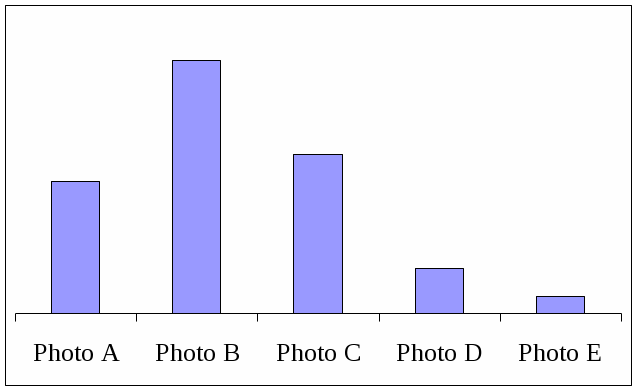
STOP. PLEASE DO NOT TURN PAGE UNTIL INSTRUCTED TO DO SO.
Focus Group Discussion Guide
Section C. In this
section we ask for your opinion about government efforts to reduce
haze in national parks and wilderness areas.
Federal and state officials are considering a variety of actions throughout the country that would reduce haze in national parks and wilderness areas. Although initial improvements may be modest, the goal would be to eventually eliminate human contributions to haze in these natural areas.
All of these actions would have costs for consumers:
Requiring power plants to purchase and install pollution control equipment would lead to higher electricity rates.
Regulations related to motor vehicle pollution would lead to higher car and truck prices, higher gasoline prices, or increased annual inspection costs.
Regulations that reduce factory emissions would lead to higher prices for the products we purchase.
For now, please focus on government actions that would reduce haze within the region circled in red that is labeled "Southern Appalachians" on the map on the following page. There are several national parks in this region, including Shenandoah and Great Smoky Mountains. Haze could be reduced in the Southern Appalachians region if vehicles, power plants, and industries located west of the region install new air pollution controls.
Focus Group Discussion Guide
Southern
Appalachians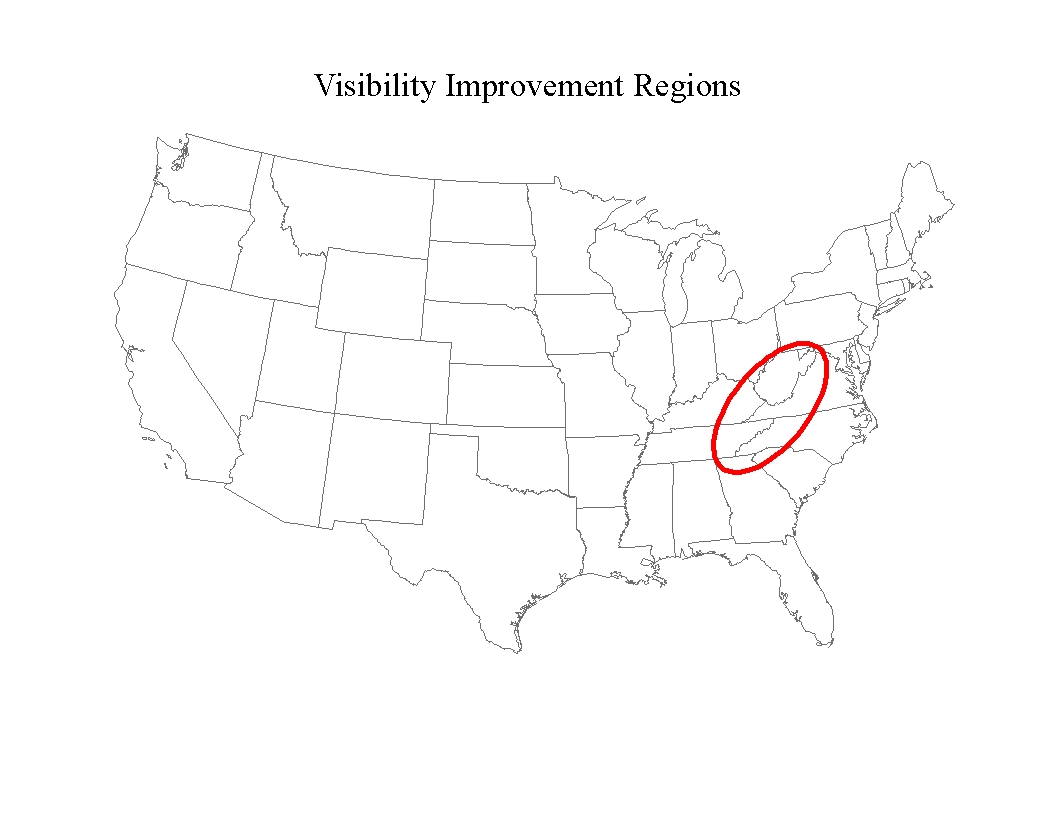

Suppose the federal government could set up a program to provide grants to encourage vehicle owners, power plants, and industries to install new air pollution controls. These controls would only affect air quality within the circled region.
Would you be willing to pay higher taxes to support such a program? (Circle one number)
1 YES
2 NO
3 DON'T KNOW
Focus Group Discussion Guide
Please unfold the poster that came with your survey booklet. [See the draft survey instrument for a copy of the poster.] The photographs at the top of the poster show five different levels of haze (A, B, C, D, and E) at three scenic vistas in the Southern Appalachians region.
Below the photographs, we indicate the percentage of days each year that typically have visibility levels like those in the photographs.
The first row represents the current visibility conditions in the region. These are the conditions that will exist without any new government programs to reduce haze.
The next two rows indicate future visibility conditions under two different federal programs designed to reduce haze in the Southern Appalachians region.
The programs would reduce haze by providing grants to encourage vehicle owners, power plants, and industries to install new air pollution controls.
The grant programs would begin immediately, and visibility would steadily improve until the conditions in the photographs were reached.
Depending on how they are set up, the programs would also differ in the cost, the time required for implementation, and the improvements in temporary health effects experienced by visitors and residents with asthma or other respiratory conditions.
All U.S. households would pay for these programs through higher taxes.
STOP. PLEASE DO NOT TURN PAGE UNTIL INSTRUCTED TO DO SO.
Focus Group Discussion Guide
Suppose that you had the opportunity to choose a visibility improvement program for the Southern Appalachian Region described above. The alternatives that you could choose between are as follows:
|
|||
Program Attributes: |
Program 1 |
Program 2 |
Neither Program |
Visibility
|
See Poster |
See Poster |
Current Conditions |
Temporary health effects for visitors and residents with respiratory problems
|
Very minor |
None |
Very Minor |
When improvement would be fully implemented
|
5 years from now |
10 years from now |
No improvement |
Annual cost to your household
|
$50 |
$100 |
$0 |
Similar improvements at parks and wilderness areas nationwide? |
Yes |
No |
No |
Which program would you choose? (CIRCLE ONE NUMBER)
In considering these programs, please keep in mind that:
|
|||
Focus Group Discussion Guide
Once again, suppose that you had the opportunity to choose a visibility improvement program for the Southern Appalachian Region described above. The alternatives that you could choose between are as follows: |
|||
Program Attributes: |
Program 1 |
Program 2 |
Neither Program |
Visibility
|
See Poster |
See Poster |
Current Conditions |
Temporary health effects for visitors and residents with respiratory problems
|
None |
Very minor |
Very Minor |
When improvement would be fully implemented
|
1 year from now |
5 years from now |
No improvement |
Annual cost to your household
|
$200 |
$100 |
$0 |
Similar improvements at parks and wilderness areas nationwide? |
Yes |
No |
No |
Which program would you choose? (CIRCLE ONE NUMBER)
In considering these programs, please keep in mind that:
|
|||
| File Type | application/msword |
| File Title | VALUING VISIBILITY IN NATIONAL PARKS: STUDY PLAN |
| Author | JohnsonS |
| Last Modified By | Megan McBride |
| File Modified | 2007-03-28 |
| File Created | 2007-03-28 |
© 2025 OMB.report | Privacy Policy
